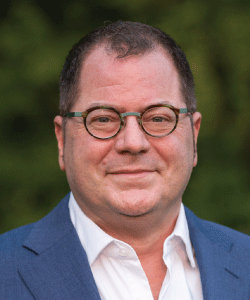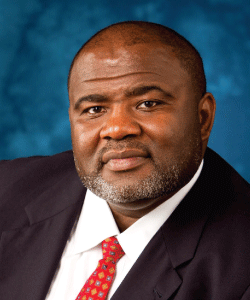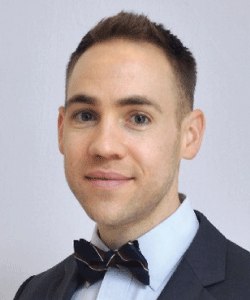Featured
New Directions for Diversity, Equity, and Inclusion in Higher Education
Higher education shifts gears in its approach to diversity, equity, and inclusion.

Diversity and inclusion have been on the higher education agenda for decades. Colleges and universities have created offices for diversity, equity, and inclusion (DEI); added diversity statements to their websites; asked faculty applicants to provide diversity statements; and made myriad other efforts to attract faculty and students from a wider range of ethnic, racial, and demographic backgrounds. But although such efforts are laudable, doubts remain about whether they will succeed in improving equity and inclusion for underrepresented individuals or simply continue to benefit groups that have been privileged throughout these institutions’ histories. Researchers who study diversity, have suffered the consequences of less-inclusive universities, or are attempting to create more equitable academic environments have some ideas about which strategies might help to create more diverse, equitable, and inclusive contexts that also benefit members of underrepresented groups.
“The most important thing is that the DEI plan be consistent with the culture and structure of the institution.”
Robert Sellers (University of Michigan)
Doing DEI differently
In their diversity statements, most universities either frame the benefits of diversity from a moral perspective (e.g., increasing fairness and justice) or from an instrumental perspective (e.g., broadening horizons). In her research, APS Fellow and past Board Member Stacey Sinclair (Princeton University) has noted that framing diversity as a moral imperative implies that universities are attempting to correct unfairness, whereas instrumental framings make the benefits of diversity salient to members of more privileged groups. This instrumental view of diversity also tends to emphasize that increased diversity has positive effects on learning outcomes for everyone. However, “instrumental diversity” might provide more benefits for the majority groups than for the underrepresented groups it is meant to benefit.

(University of Wisconsin–Madison)
Sinclair’s findings align with the DEI programming in the Department of Psychology at the University of Wisconsin–Madison (UW–Madison), which frames increasing diversity as the right thing to do. “That argument can be very meaningful to scholars of color,” explained APS Fellow and Board Member Seth Pollak, the department’s recently appointed associate chair for Equity, Inclusion, and Diversity (EID). “You’re not bringing students and scholars of color to campus just to make a better learning environment for everyone. You’re making sure that you have a diverse program because it’s wrong not to have people of different backgrounds and ethnicities well represented in your program.”
Pollak, a White researcher who studies child development, stepped into this newly created position after a department meeting spurred by the death last May of George Floyd, a Black man in Minneapolis, Minnesota, at the hands of police. His death and others like it sparked conversations within the department about the need to become an anti-racist institution by making changes that could have an immediate impact.
Why appoint a White chair? “We felt like it was really important for the person stepping into this role to represent a majority position, rather than be a member of a marginalized group,” Pollak said. “We felt it was an important way of signaling that these issues of equity, inclusion, and diversity aren’t just of concern to people in marginalized or minority groups, or even just to people who study issues of equity, inclusion, and diversity.” Moreover, he added, there was clearly “a lot of work to be done, and it’s not fair to ask the faculty of color to do it because they didn’t create this problem. White folks have perpetuated this problem, and we felt that it was up to us as a department to solve it.”
In addition to creating this position, the department unanimously passed a resolution to make diversity and equity its number-one goal, orienting all its activities and guiding its decision making through that lens.
Work groups at the University of Wisconsin–Madison and their mission.
Work groups are part of the diversity, equality, and inclusion efforts within the Psychology Department at UW-Madison. Each group includes faculty members, department staff, graduate students, undergraduate students, alumni no longer on campus, and an expert in the area from outside the department. The groups aim to address specific issues by coming up with two or three recommendations, including at least one that can be implemented immediately.
Internal Department Communication:
How can we improve the quality of our conversations about race and racial issues in our department meetings, brownbags, colloquia, classes, and lab meetings?
Improving Faculty Diversity:
What steps can we take to increase the desirability of our department to BIPOC [black, Indigenous and people of color] scholars, recruit these top faculty candidates, and then best retain and support them?
Improving Undergraduate Access:
What can we do as a department to improve the racial diversity of our undergraduate enrollment in our classes and major? How can we better welcome and attract BIPOC students to become involved in our labs?
Improving Public Messaging:
How can we best signal to campus administration, undergrads, potential graduate school applicants, potential faculty candidates, and the Madison community our engagement with equity and diversity issues?
Undergraduate Community Building:
How can our department strengthen our efforts to build a robust undergraduate community and network for our BIPOC students?
Improving Graduate Student Diversity:
How can our department strengthen our efforts to build and support a robust graduate student community of BIPOC students?
Diversity Messaging in the Department:
How our department can become more thoughtful about our internal diversity? messaging?
Graduate Curriculum Issues:
How can our department become more thoughtful about issues of inclusion and diversity in our graduate teaching, including scholarship about race/ethnicity as well as research of BIPOC scholars?
Undergraduate Curriculum Issues:
How can our department become more thoughtful about issues of inclusion and diversity in our undergraduate teaching, including scholarship about race/ethnicity as well as research of BIPOC scholars?
Improving Mentoring of Students:
How can we best educate and support faculty to ensure successful mentoring of underrepresented students?
Improving Campus Partnerships:
How can we better work and partner with other departments across campus to extend, grow, and strengthen the community of BIPOC scholars on campus?
Connecting to the Madison Community:
How can our department better connect with communities of color off-campus?
Diversity Effort Accountability:
How will we know if our racial equity initiatives are succeeding or what needs to be revisited? What metrics should the department attend to every year?
Alternative Grievance Systems:
How can we change from seeing complaints as adversarial threats to valuing them as insights that can spark positive change?
DEI by work group, not committee
Pollak didn’t take the traditional step of forming a committee to tackle diversity at UW–Madison. “I didn’t want to exclude anyone who might have liked to be on the committee but wasn’t asked,” Pollak explained. Most importantly, he added, “I didn’t want to create a situation where everyone in the department felt that making these changes was just the responsibility of the people on a single committee and that everyone else could just go along with their regular life.”
Instead, Pollak created about 20 small work groups aimed at addressing specific issues, ranging from internal departmental communications and curricula to accountability in DEI efforts and connections to off-campus communities. Each work group includes faculty members, department staff, graduate students, undergraduate students, alumni no longer on campus, and an expert in the area from outside the department. Nearly all members of the 141-person department are involved; “everyone is trying to address racial equity problems,” he said.
At the outset, the work groups were asked to come up with two or three recommendations, at least one of which could be implemented immediately, while the others could be more long term. “I think we need both,” Pollak said. “If everything is aspirational and in the future, we’re not doing anything now. And if we’re just grabbing low-hanging fruit and making only small immediate changes, we don’t really have a guide or a plan for what to do going forward.”
As of this writing, in early December, the work groups are still developing their recommendations. After collecting them, the department plans to vote collectively on what to target first. However, these are not said-and-done solutions, according to Pollak; the process requires continual feedback and adjustment.
The details of UW–Madison’s approach may be unique, but there is nothing unique in the department’s culture that makes the initiative applicable there. On the contrary, “almost any department could take some version of it and think about what would work in their department,” said Pollak. Moreover, “some of these things are not crazy expensive things to do.” He acknowledged that others in fact are move expensive; “for example, our university just gave the department permission to hire a number of scholars of color, and between salaries and start up costs, that is millions of dollars, but they are certainly worth the economic cost.”
Addressing the “minority tax”
UW–Madison’s psychology department is also taking on an issue seldom discussed within university settings: the “minority tax,” or the burden of extra responsibilities placed on underrepresented faculty in the name of diversity. Pollak and his team are scrutinizing the department’s merit system and salary review process to better account for this additional workload.
“We have never officially factored in that members of underrepresented groups have extra work to do,” Pollak explained. “These colleagues are asked to be official and unofficial mentors to other students of color. They’re often asked to be sounding boards by their White colleagues about issues of racial equity. And we want to make sure that we value and recognize and compensate this work in a formal way.” By doing that, he hopes the department will “end up creating a climate where people feel like they’re flourishing and personally feel valued, recognized, and supported.”
A 4-year-old DEI program
The University of Michigan (UM) has a history of significant contributions to equity and diversity. In 1870, it became one of the first universities in the United States to admit women. It appointed Henry Johnson as its first Black administrator in 1972, outlawed discrimination based on sexual orientation in 1993, and mounted a historic defense of race-conscious admission policies before the U.S. Supreme Court in 2003. Most recently, in 2016, UM created and implemented a strategic plan for DEI.
APS Fellow Robert M. Sellers, a professor of psychology and education and the university’s vice provost for equity and inclusion and chief diversity officer, explained how the DEI plan aims to create long-term systemic change.
The plan is actually 51 different plans, Sellers said; every major administrative unit at the school, college, and campus level has its own plan. There is also a university-level plan designed to support these units, scale up their ideas, and address issues that can be tackled only at the central level.
The planning process was designed to be as inclusive as possible. Every member of the student body, faculty, staff, and larger university community had an opportunity to contribute.
“The plans are not simply the president’s plans. Everyone has ownership and everyone has responsibility,” Sellers said.
Community engagement activities were central for the development of the DEI strategic plan. Between January and March 2016, thousands of faculty, staff, and students from across the Ann Arbor campus participated in activities such as focus groups, town halls, online forums, fireside chats, surveys, and feedback bulletin boards.

(University of Michigan)
Implementing such a large-scale plan has posed some challenges, however.
“First, it was difficult to get people to believe that the university was really serious in wanting to change. Second, we were building the airplane as we were flying it—we went from concept to implementation in about 9 months,” Sellers said. “Third, we needed to create the infrastructure to make the plan work.”
This DEI process produced more than 2,500 action items, including the following particularly unique and impactful ideas:
Wolverine Pathways: A year-round free program that partners with families, schools, and communities in Detroit, Southfield, and Ypsilanti, Michigan, to provide learning experiences that will help students succeed in school, college, and careers.
University Diversity and Social Transformation Professorship: Established to acknowledge outstanding senior faculty at UM or to recruit faculty from other institutions on the basis of their significant contributions to DEI.
James S. Jackson Distinguished Career Award for Diversity Scholarship: Named after APS James McKeen Cattell Fellow James S. Jackson and awarded to recognize a senior faculty member at UM who has made important contributions to understanding DEI through research, scholarship, and creative endeavors; who has an outstanding record of teaching and mentoring; and whose work has focused on issues of importance to underrepresented communities.
Sellers believes UM’s DEI plan could be a blueprint for other institutions. With this in mind, the university has provided a toolkit that other institutions can use in their planning process.
“The most important thing is that the DEI plan be consistent with the culture and structure of the institution,” Sellers said.
Navigating socioeconomic status in academia
Race and ethnicity might be the most salient areas of inequality in academia, but they are not the only ones. People of lower socioeconomic status (SES), women, people with disabilities, and members of the LGBTQ community are more likely to face career barriers than people from majority groups (Blustein, 2013; Diemer & Ali, 2009).
Students with lower SES are less likely to complete high school—in 2016, for example, 9.7% of 16- to 24-year-olds from low-SES backgrounds had dropped out of high school, compared to 2.6% of their higher-income peers (National Center for Education Statistics, 2017). The path to higher education can be paved with added difficulties. Prospective college students from lower SES backgrounds have less information about college (Brown et al., 2016) and are at risk of accruing greater student loan debt (Houle, 2014).

Nick Rule, a professor of psychology at the University of Toronto, managed to overcome those and other barriers as a low-SES student. Today, Rule leads a research laboratory and has received several prestigious awards for his research on how people process information about others and how it influences their behavior. He believes that sharing his experiences can help people from different backgrounds become more comfortable interacting with one another.
In a 2020 article published in Perspectives on Psychological Science (Jaremka et al., 2020), Rule discussed his experiences with impostor syndrome—the feeling that you are pretending to be something you are not—throughout his academic life. “It was very difficult,” he explained. “The anti-elitist attitude was something I always grew up with; my family was not particularly excited about the idea of me going to a university. It was like joining the elite, in their minds. There was this expectation among them, even a hope, that I would fail. And I really went away to college thinking that I wasn’t going to make it.”
Indeed, when he got to Dartmouth, Rule felt that many students were much better prepared for university than he was, given that he had attended what was then one of the worst high schools in the United States. But he benefited from resources such as the university’s Academic Skills Center, where he took classes to gain basic study skills. “They gave advice like ‘always sit in the front row, have a regimen, wake up every day at the same time, take notes in a specific way,’” Rule said. “I went to everything they offered. I felt I needed every advantage I could get because I felt I wasn’t as good or as smart as the other students.”
Related content from this issue:
- An Uneven Playing Field: Women in the field have come so far—and have some distance yet to go.
- Turning the Page: Academic publishers confront a stubborn absence of diversity
- The Bias of Crowds: How social environments change our minds
- Up-and-Coming Voices: Previews of emerging research on inclusivity
Rule also recalled the challenges of building social connections at an Ivy League school. His peers’ parents were executives and doctors, and he was often shocked at how carefree they seemed to be.
“One thing that people tend to overlook is that when you come from a background like mine, there’s no margin of error,” Rule said. “I could never afford to make any mistakes—for example, partying and missing class—because the moment I made a mistake it would all be over for me.”
Rule noted that mentorship can also play an important role in helping students from underrepresented backgrounds adjust to higher education. He hadn’t even considered pursuing a PhD until one summer during his undergraduate years, when he got a grant from Dartmouth to do research at the University of California in Santa Barbara. The person he worked with suggested he continue his education there. Back at Dartmouth, Rule told his social psychology professor, APS Fellow Jennifer Richeson, that he was thinking about going to graduate school. And he was stunned when she said he should.
Rule ended up going to graduate school at Tufts University, where his PhD advisor also encouraged him along the way, including providing tips on how to behave in a professional context.
“I was a bit rough around the edges,” he said. “She taught me how to speak and be a professional in a field I didn’t know and didn’t understand. If it hadn’t been for her being explicit about these things and for believing in me and giving me chances, I don’t think I would have been able to get where I am now.”
Being a little more human with each other in this way could help people to have more authentic interactions, Rule proposed. He believes that this is part of what DEI is really about—not just recognizing but celebrating who people are and where they are from.
Feedback on this article? Email apsobserver@psychologicalscience.org or scroll down to comment.
References
Blustein, D. (2013). The psychology of working: A new perspective for career development, counseling, and public policy. Routledge.
Brown, M. G., Wohn, D. Y., & Ellison, N. (2016). Without a map: College access and the online practices of youth from low-income communities. Computers & Education, 92, 104–116. https://doi.org/10.1016/j.compedu.2015.10.001
Diemer, M. A., & Ali, S. R. (2009). Integrating social class into vocational psychology: Theory and practice implications. Journal of Career Assessment, 17, 247–265. https://doi.org/10.1177/1069072708330462
Houle, J. N. (2014). Disparities in debt: Parents’ socioeconomic resources and young adult student loan debt. Sociology of Education, 87(1), 53–69. https://doi.org/10.1177/0038040713512213
Jaremka, L. M., Ackerman, J. M., Gawronski, B., Rule, N. O., Sweeny, K., Tropp, L. R., Metz, M. A., Molina, L., Ryan, W. S., & Vick, S. B. (2020). Common academic experiences no one talks about: Repeated rejection, impostor syndrome, and burnout. Perspectives on Psychological Science, 15(3), 519–543. https://doi.org/10.1177/1745691619898848
National Center for Education Statistics. (2017). Table 110. Percentage of high school dropouts among persons 16 through 24 years old (status dropout rate), by income level, and percentage distribution of status dropouts, by labor force status and years of school completed: Selected years, 1970 through 2016. Digest of Education Statistics: 2017. http://nces.ed.gov/programs/digest/d17/tables/dt17_219.75.asp





APS regularly opens certain online articles for discussion on our website. Effective February 2021, you must be a logged-in APS member to post comments. By posting a comment, you agree to our Community Guidelines and the display of your profile information, including your name and affiliation. Any opinions, findings, conclusions, or recommendations present in article comments are those of the writers and do not necessarily reflect the views of APS or the article’s author. For more information, please see our Community Guidelines.
Please login with your APS account to comment.